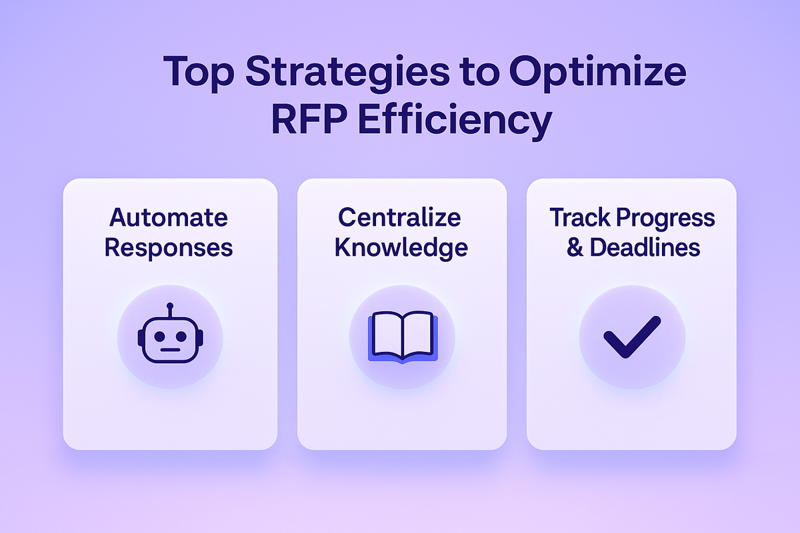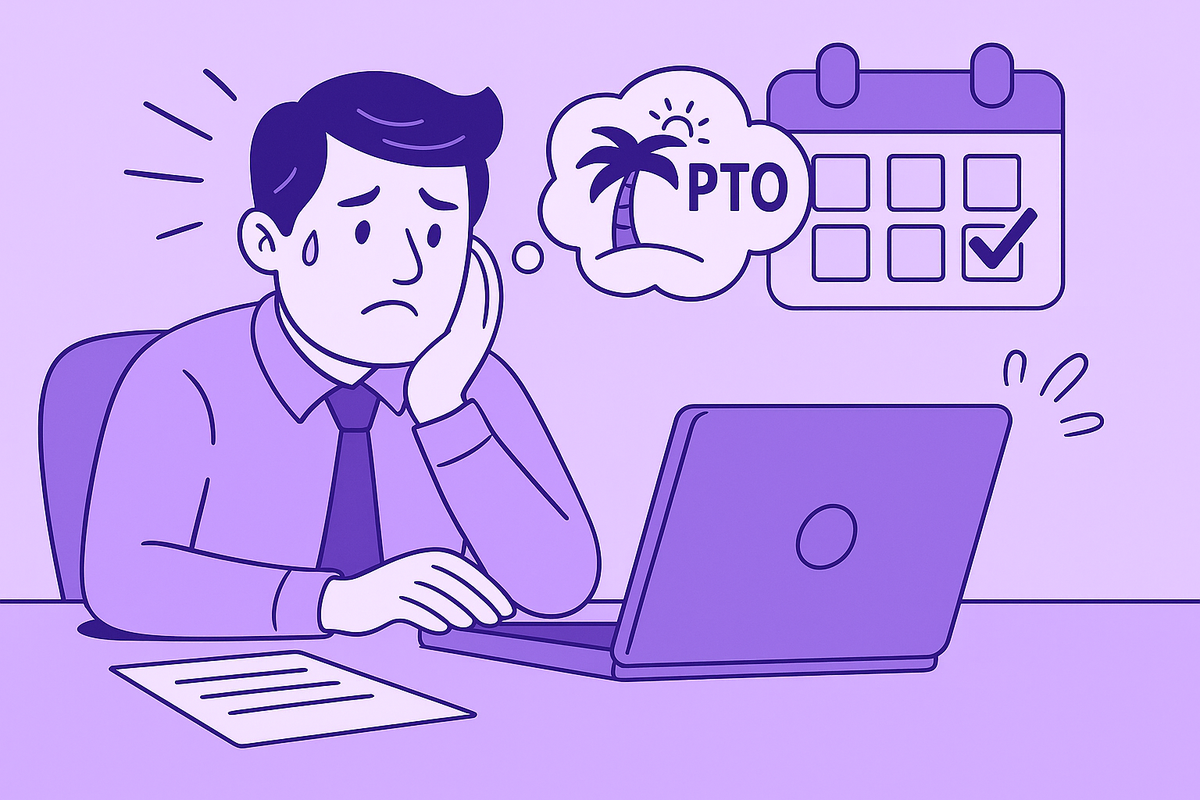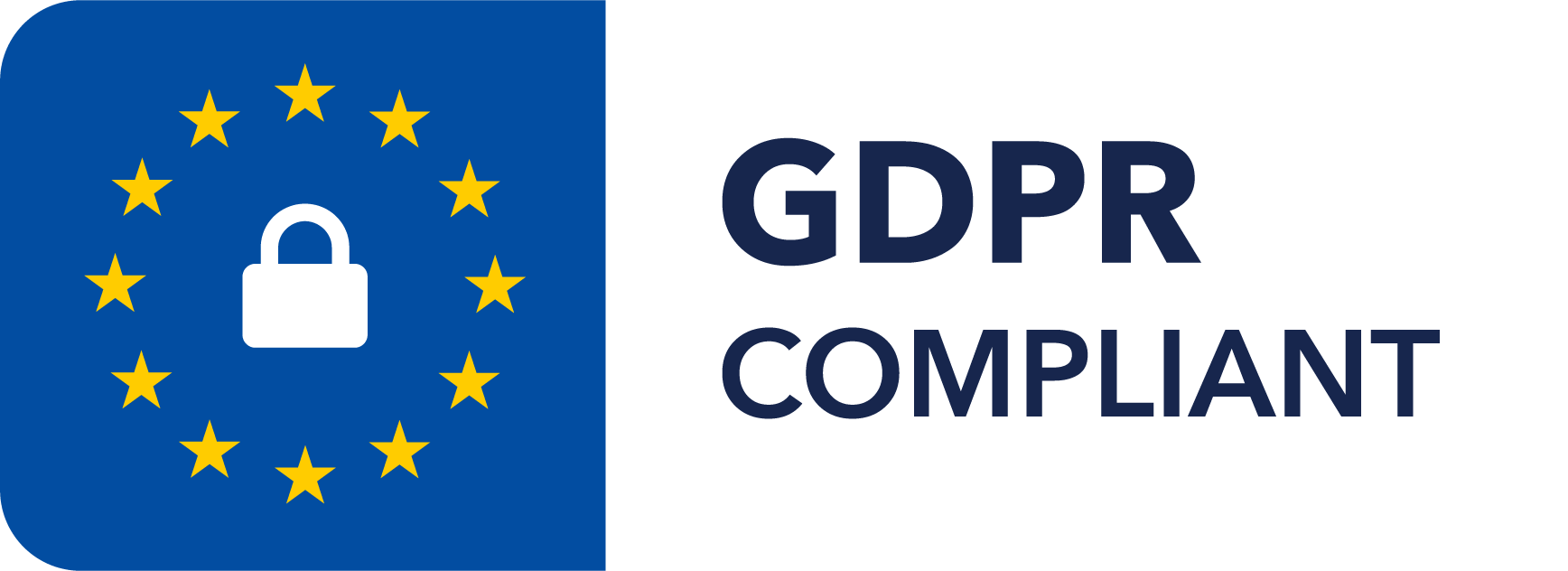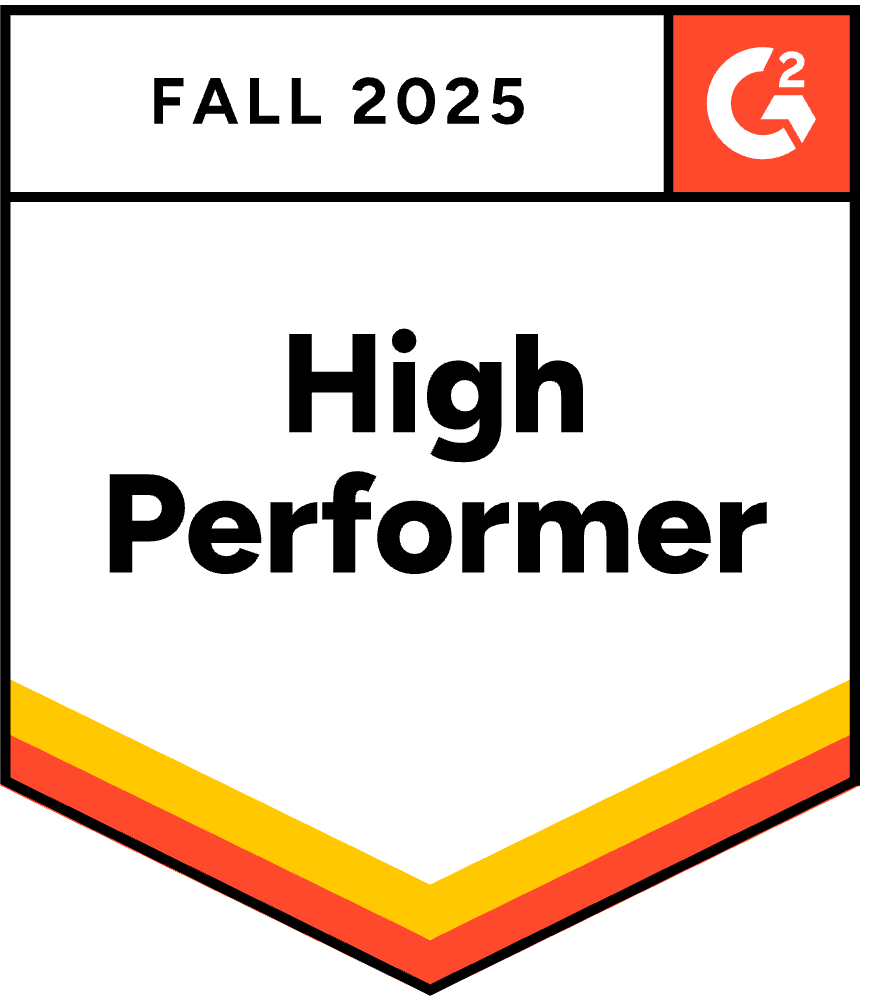Top Strategies to Optimize RFP Efficiency
August 14, 2025
By
Evie Secilmis

Top Strategies to Optimize RFP Efficiency
Handling a Request for Proposal (RFP) can be a daunting task for any organization. However, with the right strategies, you can streamline the RFP process, boost efficiency, and enhance your chances of winning new business. This article will guide you through the best practices for optimizing your RFP process.
An RFP is a document that businesses use to solicit proposals from vendors or service providers. The goal is to receive competitive bids that meet specific requirements. Understanding the RFP process is the first step toward optimizing it.
Key Components of an RFP
To streamline the RFP process, it's crucial to know the key components involved:
- Project Overview: A brief description of the project.
- Requirements: Detailed specifications and expectations.
- Submission Guidelines: Instructions on how to submit proposals.
- Evaluation Criteria: The standards by which proposals will be assessed.
- Timeline: Deadlines for submission and decision-making.
Knowing these components helps in organizing your approach and ensuring no detail is overlooked.
Strategies to Streamline the RFP Process
Optimizing the RFP process involves several strategies that can save time and resources while improving outcomes. Let's explore these strategies in detail.
Develop a Clear RFP Template
A well-structured RFP template can significantly reduce preparation time. It ensures that all essential information is included and presented in a consistent format.
Benefits of Using a Template
- Consistency: Ensures all RFPs follow the same structure.
- Efficiency: Reduces time spent on drafting each new RFP from scratch.
- Clarity: Helps vendors understand your needs better.
Automate the Process
Automation tools can help manage repetitive tasks, freeing up valuable time for more strategic activities. Consider using RFP management software to automate:
- Document distribution: Easily send RFPs to multiple vendors.
- Response collection: Centralize and organize incoming proposals.
- Evaluation: Use automated scoring to assess proposals quickly.
Automation not only accelerates the process but also minimizes the risk of human error.
Foster Cross-Department Collaboration
RFPs often require input from various departments, such as finance, legal, and technical teams. Encouraging collaboration can ensure that all necessary perspectives are considered, leading to more comprehensive RFPs.
Tips for Effective Collaboration
- Regular Meetings: Schedule meetings to discuss RFP requirements and progress.
- Shared Platforms: Use collaborative tools like Google Drive or Microsoft Teams to share documents and ideas.
- Clear Communication: Establish clear lines of communication to avoid misunderstandings.
Establish a Review Process
Implementing a review process ensures that RFPs meet quality standards before they are issued. Having multiple eyes review the document can catch errors and improve clarity.
Steps for a Successful Review Process
- Assign Reviewers: Designate team members to review the RFP.
- Set Review Criteria: Define what aspects need checking (e.g., clarity, completeness).
- Collect Feedback: Gather input and make necessary revisions.
Build Strong Vendor Relationships
Maintaining good relationships with vendors can streamline the RFP process. Vendors familiar with your organization are more likely to provide tailored, competitive proposals.
How to Strengthen Vendor Relationships
- Regular Communication: Keep vendors updated on upcoming RFPs and changes.
- Feedback Sessions: Provide constructive feedback on past proposals.
- Networking Events: Attend industry events to connect with vendors.
RFP Best Practices
Implementing best practices can further optimize your RFP process, making it more efficient and effective.
Set Clear Objectives
Before issuing an RFP, clearly define what you aim to achieve. Setting clear objectives helps guide the RFP process and ensures all stakeholders are aligned.
Focus on Quality Over Quantity
Receiving a large number of proposals isn't always beneficial. Focus on attracting quality proposals that meet your requirements. Provide detailed criteria and encourage vendors to submit only if they can genuinely meet your needs.
Maintain Transparency
Transparency in the RFP process builds trust with vendors and ensures fair competition. Clearly communicate evaluation criteria, timelines, and decision-making processes.
Continuously Improve
The RFP process should evolve based on past experiences. After each RFP, conduct a post-mortem to identify what worked well and what could be improved.
Conducting a Post-Mortem
- Gather Feedback: Collect input from all stakeholders involved.
- Analyze Outcomes: Review the success of the RFP process and vendor selection.
- Implement Changes: Make adjustments to templates, processes, or strategies as needed.
Conclusion
Optimizing the RFP process is crucial for any organization looking to improve efficiency and win more business. By developing clear templates, automating tasks, fostering collaboration, and implementing best practices, you can streamline the RFP process and achieve better results.
Remember, the key to success lies in continuous improvement and adapting your strategies based on feedback and outcomes. By following these strategies, you can enhance your RFP process and position your organization for greater success in the competitive marketplace.
Share this post
Link copied!



















